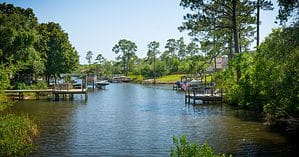Eglin Air Force Base, located in the northwest of Florida’s panhandle, spans 724 square miles, making it the largest Air Force base in the world! It extends across 3 different counties in the state of Florida.
In every corner of the globe, air force bases stand as stalwart guardians of national and international airspace. These sprawling installations are not just home to sleek fighter jets and impressive military equipment but are also bustling communities where service members live, train, and work.
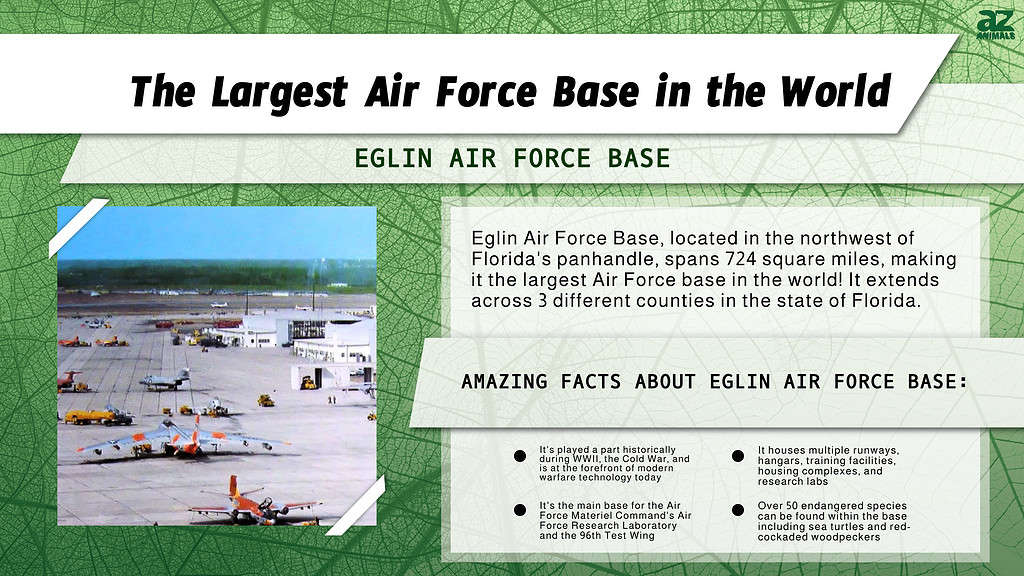
Air Force bases vary dramatically in size, from compact installations nestled within city limits to vast complexes stretching over hundreds of square miles. The size of an air force base is often a reflection of its role and capabilities. Some bases house vast airfields and accommodate large aircraft fleets, while others host specialized facilities for training, research, or strategic operations.
Yet, regardless of their size, all air force bases share a common purpose: to support the mission of their respective air forces. They serve as the launching pads for defense operations, the incubators for technological innovation, and the pillars of national security. In essence, each air force base, whether small or large, is a cog in the grand machine of global defense.
In this article, we discover the world’s largest air force base. Join us as we embark on a detailed exploration of this giant. We’ll dive into its features, delve into its operations, and highlight the special projects that keep it on the leading edge of military aviation.
What Is the Largest Air Force Base in the World?
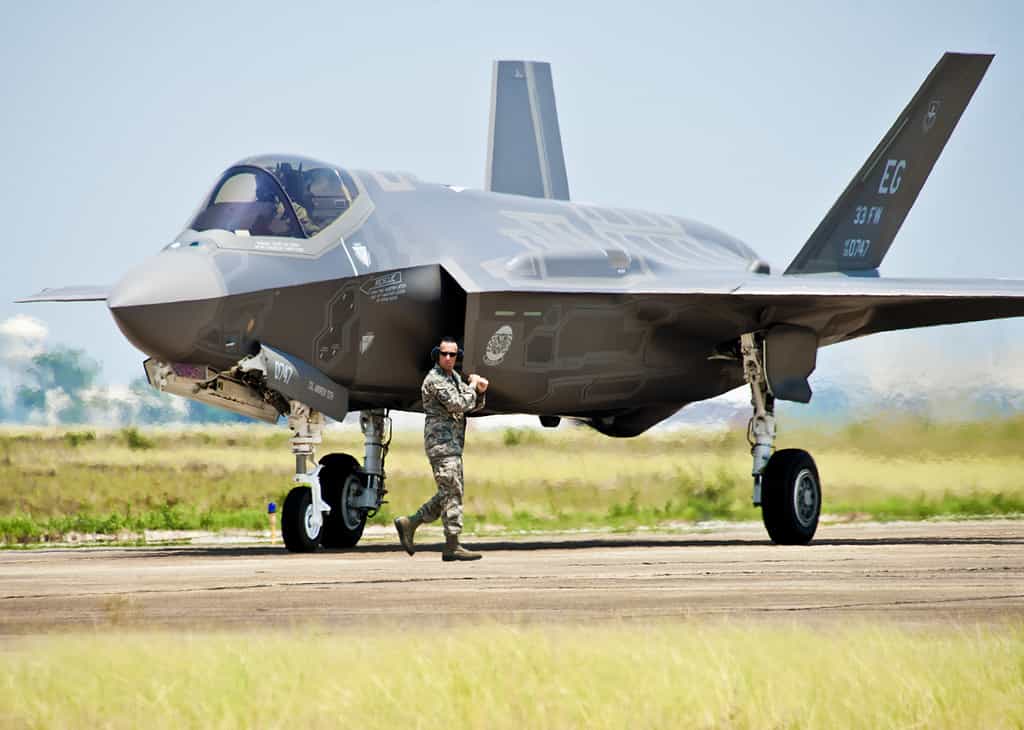
A military aircraft landed at Eglin Air Force Base.
©U.S. Air Force photo by Samuel King Jr. / CC0 – Original / License
Eglin Air Force Base is the world’s largest air force base. This vast facility spans over 724 square miles, extending into three different Florida counties. It’s a hub of buzzing activity, where the roar of jet engines mixes with the hum of groundbreaking research.
But size is just one part of its story. Eglin AFB is more than just a colossal military installation. It’s a symbol of American air power, a testing ground for cutting-edge technology, and a critical player in national defense.
A Glimpse into Eglin AFB
Welcome to Eglin Air Force Base, the giant among all global air force bases. Situated in the northwest of Florida’s panhandle, Eglin AFB holds the title for the largest air force base in terms of area, an impressive claim considering the global scale. Yet, size isn’t its only claim to fame; its strategic significance within the United States Air Force (USAF) structure is equally important.
The History of Eglin AFB
Eglin AFB’s story begins in the middle 1930s, a time marked by rapid advancements in aviation. Originally a small bombing and gunnery range, the base has grown exponentially over the years, mirroring the evolution of military aviation itself. From supporting critical operations during WWII and the Cold War to being at the forefront of modern warfare technology today, Eglin AFB’s history is a testament to its crucial role in the USAF.
Eglin AFB’s Role within the USAF
Eglin AFB, being the main base for the Air Force Materiel Command’s Air Force Research Laboratory and the 96th Test Wing, is not just a hive of aerial activities. It also stands as a fertile ground for pioneering research and development initiatives. Its sprawling grounds host a variety of other significant units, contributing to the USAF’s diverse missions – from combat readiness and advanced training to testing and evaluation of new technologies.
The Features of Eglin AFB

Eglin AFB is so huge that it includes beach access for its residents.
©Artiom Photo/Shutterstock.com
Let’s take an aerial tour of Eglin AFB. Spanning a mammoth 724 square miles, it’s so big that it extends into three different counties in Florida. Its vast expanse comprises multiple runways, scores of hangars, varied training facilities, expansive housing complexes, and state-of-the-art research labs. Picture a bustling city dedicated entirely to air power, and you’ve got a glimpse of what Eglin AFB is like.
Facilities within Eglin AFB
Eglin AFB can be thought of as a constellation of facilities, each contributing to its overall mission. The base hosts the 96th Test Wing, responsible for testing and evaluating new aircraft and systems. It’s also home to the 33rd Fighter Wing, the training hub for F-35 pilots. Beyond these, it houses a variety of other squadrons and units, each with their specific roles.
One striking feature of Eglin AFB is its research labs. These labs, falling under the umbrella of the Air Force Research Laboratory, are dedicated to exploring new technologies in the realms of munitions, navigation, radar, and more. They serve as hotbeds of innovation, shaping the future of the USAF.
Eglin AFB’s Geography and Environment
What makes Eglin AFB even more unique is its natural landscape. The base is set against a backdrop of the Gulf of Mexico, vast forests, and sandy beaches. Its diverse terrain makes it an ideal site for varied training exercises, from beach landings to forest combat drills.
The base also prides itself on its environmental stewardship. Over 50 endangered species can be found within the base. These include sea turtles that nest on their beaches and red-cockaded woodpeckers that live in its longleaf pine forests. Due to this, a significant portion of its land serves as a protected habitat. Balancing rigorous military activities with conservation efforts, Eglin AFB stands as a unique blend of operational might and ecological preservation.
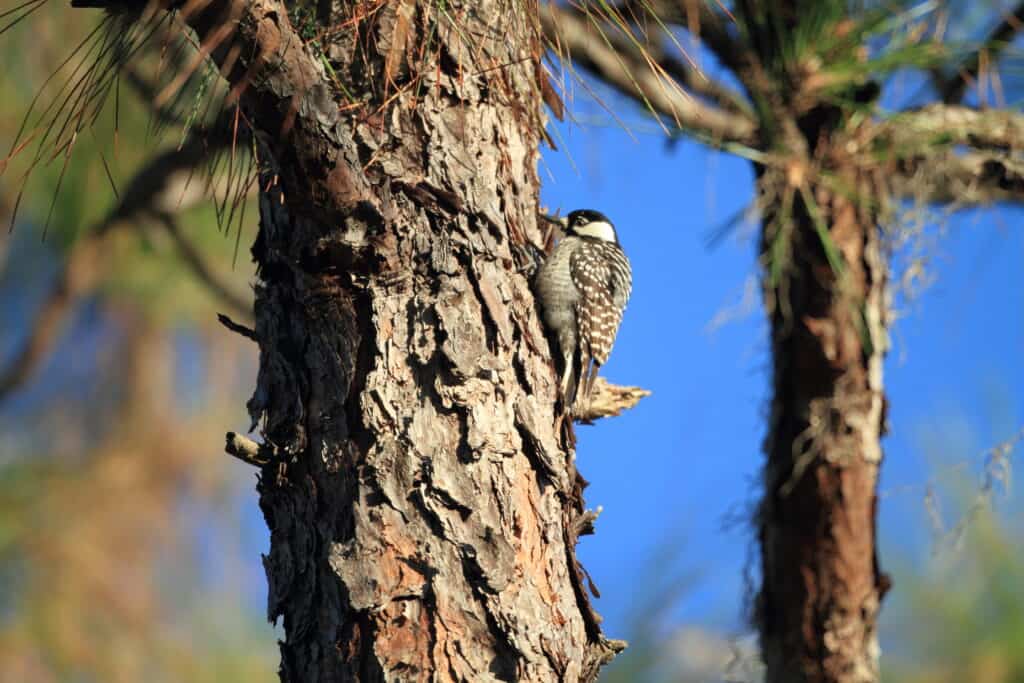
A red-cockaded
Woodpecker
lives within the longleaf pine forests on the base.
©feathercollector/Shutterstock.com
Operational Aspects of Eglin AFB
At the heart of Eglin AFB lies its strategic mission. As a critical component of the USAF, the base supports a variety of defense operations. From deploying aircraft for overseas missions to executing domestic security operations, Eglin AFB is always on the front lines. Its location on the Gulf of Mexico enhances its strategic advantage, allowing quick responses to various operational theaters.
Units at Eglin AFB
Eglin AFB is home to a diverse array of units, each bringing unique capabilities to the table. The 96th Test Wing undertakes rigorous testing and evaluation of new weapons, navigation systems, and other military technologies. The 33rd Fighter Wing specializes in training pilots for the cutting-edge F-35 fighter jet. The 53rd Wing performs a crucial role in electronic warfare, armament and avionics, and software testing. Each of these units contributes to a well-coordinated symphony of defense operations.
Training and Testing at Eglin AFB
Owing to its size, Eglin AFB serves as a massive training ground for the USAF. The base hosts regular exercises involving diverse scenarios, from air combat drills to rescue missions. It’s not uncommon to see joint exercises with other military branches leveraging the vast space available.
In addition, the base serves as a ‘proving ground’ for testing new aircraft and military technologies. The Air Force Research Laboratory conducts regular trials here, pushing the limits of technology and paving the way for future advancements.
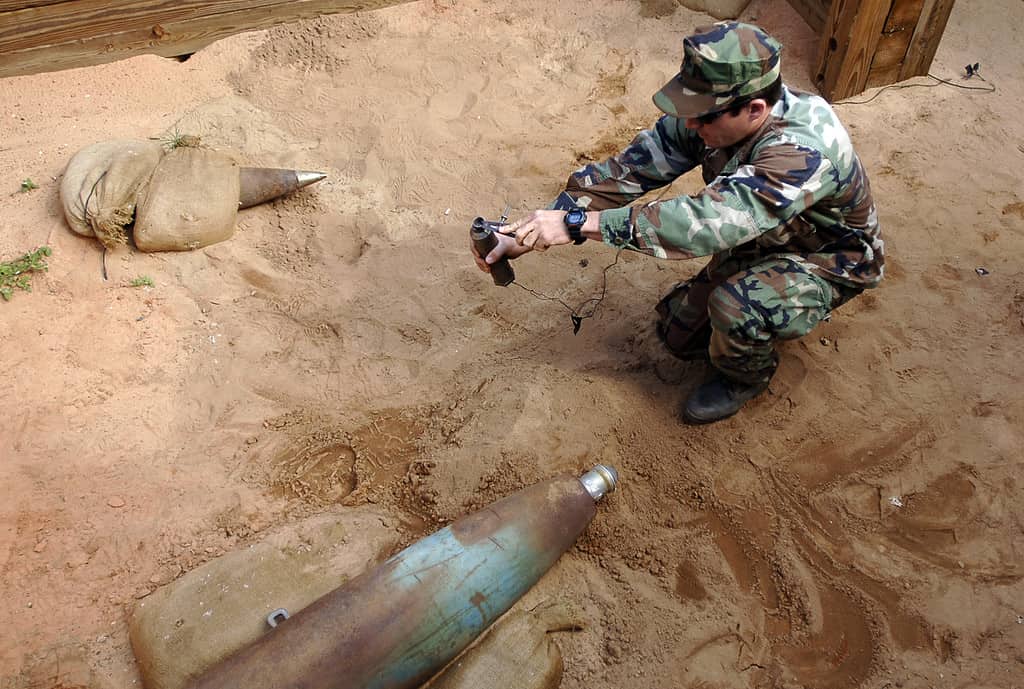
An explosive charge is prepared to be used for rendering unexploded ordnance safe to handle at the Naval School of Explosive Ordnance Disposal.
©U.S. Navy photo by Mass Communication Specialist 2nd Class Jayme Pastoric / CC0 – Original / License
Special Projects and Research at Eglin AFB
Eglin AFB is a hub for special projects that push the boundaries of military technology. Here, teams work on advanced systems ranging from precision-guided munitions to next-generation navigation tools. These special projects aren’t just aimed at enhancing military prowess but also at ensuring the USAF’s technological edge over potential adversaries.
Research at Eglin AFB
Eglin AFB houses the Air Force Research Laboratory (AFRL) Munitions Directorate, one of the premier research labs in the USAF. The directorate is responsible for discovering and developing new air-delivered weapons. Their research extends to areas like advanced guidance and control, weapon autonomy, and warhead technologies.
Joint Research Initiatives
In addition to in-house research, Eglin AFB often collaborates with other military units, research organizations, and academic institutions. This collaboration paves the way for synergistic advancements, creating a dynamic ecosystem for innovation. From working with NASA on aerospace research to partnering with universities on new radar technologies, these collaborations ensure the USAF stays on the cutting edge.
Long-term Impact of Research
The impact of Eglin AFB’s research initiatives extends far beyond immediate military applications. The technologies pioneered here often filter down into civilian life, changing the world in profound ways. For example, GPS, a now ubiquitous technology, has its roots in military research similar to what is carried out at Eglin AFB.
Impact of Eglin AFB on Surrounding Communities

Destin, Florida, is one of the cities near Eglin Air Force Base.
©iStock.com/Joshua McDonough
Step beyond the fences of Eglin AFB, and you’ll discover a symbiotic relationship between the base and the neighboring communities. This isn’t a secluded military installation but a vibrant part of the local landscape. The impact of Eglin AFB echoes far and wide, shaping the economic, social, and cultural aspects of surrounding towns and cities.
An Economic Powerhouse
As the largest single-site employer in Florida, Eglin AFB packs a powerful economic punch. From direct employment on the base to numerous local businesses reliant on its presence, Eglin AFB significantly contributes to the economic vitality of the region. The money that flows into local economies through salaries, contracts, and procurement helps maintain a robust and stable economic environment.
Fostering Community Ties
Eglin AFB also fosters close-knit community ties. The base opens its doors for numerous community events throughout the year, including air shows, base tours, and various celebratory occasions. It’s not just about showing off the might of the USAF but building relationships with local residents and nurturing a sense of pride and mutual respect.
Shaping Local Infrastructure
The presence of Eglin AFB also shapes the physical landscape of surrounding communities. From housing developments to cater to the families of base personnel to improvements in transportation and public services, Eglin AFB’s influence is visible in the local infrastructure. The base’s requirements often act as a catalyst for community development, indirectly contributing to the quality of life for all residents.
An Educational Impact
The base’s influence extends to education as well. Many local schools and colleges have tailored programs to cater to military families, creating flexible and supportive learning environments. Not only does the base actively participate with schools and colleges, but it also nurtures initiatives in science, technology, engineering, and math (STEM). Through these efforts, it aims to spark inspiration among future generations who may become tomorrow’s innovators.
Comparisons with Other Notable Large Air Force Bases
When we look beyond the borders of the United States, several other air force bases stand out due to their size or strategic importance. Let’s draw comparisons between Eglin AFB and a few other notable air bases to gain a broader perspective.
Edwards Air Force Base
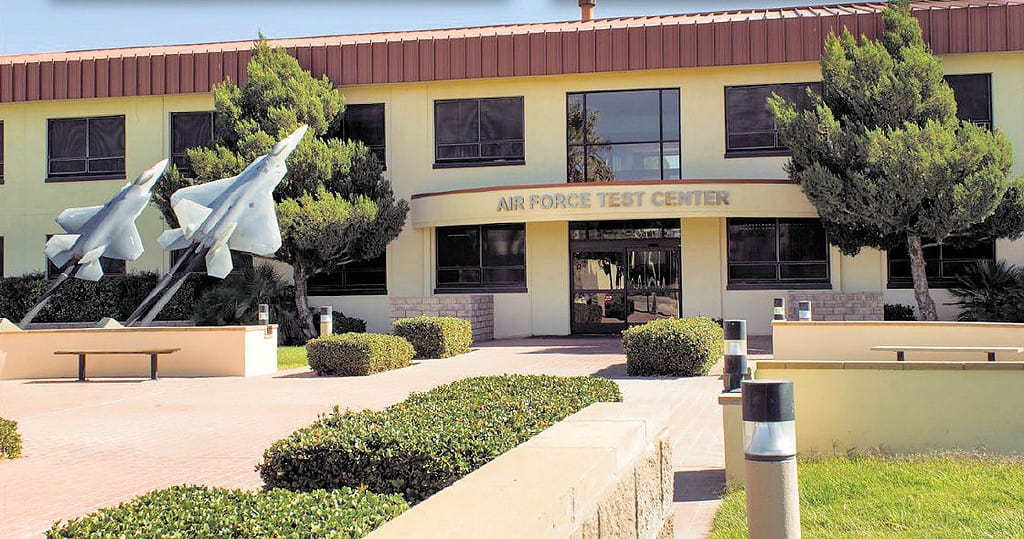
Air Force Test Center Headquarters, Edwards AFB, is located in California in the western part of the Mojave Desert.
Edwards AFB in California, while not as large as Eglin AFB in terms of land area, holds its own significance. Known as the ‘Center of the Aerospace Testing Universe,’ it has seen some of the most pivotal moments in aviation history. Unlike Eglin AFB, which has a more diverse operational focus, Edwards AFB’s claim to fame is its focus on testing and evaluation, particularly experimental aircraft and systems.
Fort Bliss
Fort Bliss, straddling Texas and New Mexico, is one of the largest military installations in the U.S. by physical size, albeit it’s an Army base. However, its collaboration with the USAF, in particular, the hosting of the Biggs Army Airfield, puts it on the map in terms of air operations. While not primarily an air force base, the synergistic efforts between the Army and the Air Force make Fort Bliss a noteworthy comparison to Eglin AFB.
Andersen Air Force Base
Andersen AFB in Guam may not compete with Eglin’s size, but its strategic location in the Western Pacific gives it a crucial role in the USAF’s operations. It serves as a forward operating base for deployments in the Asia-Pacific region. Unlike Eglin AFB, Andersen’s importance comes more from its geographical advantage rather than its size or diversity of operations.
Where is the Eglin Air Force Base Located on a Map?
Eglin Air Force Base is located in the western Florida Panhandle, approximately three miles southwest of Valparaiso in Okaloosa County. It serves as a significant United States Air Force base.
Here is Eglin Air Force Base on a map:
Key Takeaways
In the vast landscape of global air force bases, Eglin AFB stands as a titan. Its vast expanse is just the beginning of its story. This colossal base is a powerful confluence of size and significance, housing a multitude of units and serving as a hotbed for pioneering research.
Yet, the tale of Eglin AFB doesn’t end here. As the United States Air Force evolves, so too does this giant among giants. Its sprawling grounds will continue to foster future technological innovations. Its well-trodden runways will launch new missions, safeguarding national and international skies.
Crucially, it is the people of Eglin AFB that truly bring the base to life. Their relentless service forms the backbone of the U.S. defense apparatus, contributing to the ongoing narrative of national security.
The photo featured at the top of this post is © iStock.com/Oleksii Liskonih
Thank you for reading! Have some feedback for us? Contact the AZ Animals editorial team.






